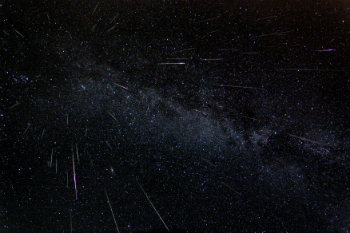 Dear readers, Catholic Online was de-platformed by Shopify for our pro-life beliefs. They shut down our Catholic Online, Catholic Online School, Prayer Candles, and Catholic Online Learning Resources essential faith tools serving over 1.4 million students and millions of families worldwide. Our founders, now in their 70's, just gave their entire life savings to protect this mission. But fewer than 2% of readers donate. If everyone gave just $5, the cost of a coffee, we could rebuild stronger and keep Catholic education free for all. Stand with us in faith. Thank you. Help Now >
Dear readers, Catholic Online was de-platformed by Shopify for our pro-life beliefs. They shut down our Catholic Online, Catholic Online School, Prayer Candles, and Catholic Online Learning Resources essential faith tools serving over 1.4 million students and millions of families worldwide. Our founders, now in their 70's, just gave their entire life savings to protect this mission. But fewer than 2% of readers donate. If everyone gave just $5, the cost of a coffee, we could rebuild stronger and keep Catholic education free for all. Stand with us in faith. Thank you. Help Now >
See the meteor shower named for a saint!
FREE Catholic Classes
Star-gazing might not be the first thing that comes to mind when Catholics think of St. Lawrence, the early Christian martyr who was cooked to death by the Romans on an outdoor grill.

The Perseids occur annually, peaking around August 10.
Highlights
Catholic Online (https://www.catholic.org)
8/2/2017 (8 years ago)
Published in Technology
Keywords: Saints, Catholic News, Astronomy
Denver, Colo. (CNA/EWTN News) - But every August, Catholics have the chance to see a meteor shower named in his honor.
The Perseids meteor shower, also called the "tears of St. Lawrence," is a meteor shower associated with the comet Swift-Tuttle, which drops dust and debris in Earth's orbit on its 133-year trip around the Sun. (The comet poses no immediate threat to Earth, at least not for several thousand years.)
As Earth orbits the Sun, it hits pieces of left-behind debris from the comet, causing them to burn up in Earth's atmosphere.
This creates a prolific meteor shower that can best be seen in the Northern Hemisphere from late July to early August, usually peaking around Aug. 10, the feast of St. Lawrence.
During it's peak, the rate of meteors reaches 60 or more per hour.
The name "Perseids" comes from the constellation Perseus, named for a character in Greek mythology, and the radiant of the shower or the point from which it appears to originate.
The name "tears of St. Lawrence" came from the association with his feast day and from the legends that built up around the Saint after his death.
Saint Lawrence was martyred on Aug. 10, 258 during the persecution of the emperor Valerian along with many other members of the Roman clergy. He was the last of the seven deacons of Rome to die.
After the pope, Sixtus II, was martyred on Aug. 6, Lawrence became the principal authority of the Roman Church, having been the Church's treasurer.
When he was summoned before the executioners, Lawrence was ordered to bring all the wealth of the Church with him. He showed up with a handful of crippled, poor, and sick men, and when questioned, replied that "These are the true wealth of the Church."
He was immediately sent to his death, being cooked alive on a gridiron. Legend has it that one of his last words was a joke about his method of execution, as he quipped to his killers: "Turn me over, I'm done on this side!"
Catholics began calling the meteors the "tears of St. Lawrence," even though the celestial phenomenon pre-dates the saint.
Some Italian lore also holds that the fiery bits of debris seen during a meteor shower are representative of the coals that killed St. Lawrence, and some traditions hold it that if one waters a basil plant and sets it out on the night of the meteor shower, they will find coal chips underneath the plant next day from St. Lawrence's tears.
Anyone in the Northern Hemisphere should be able to view the "tears of St. Lawrence" best after midnight on Aug. 11-12 this year. The meteors will shower from various points in the sky rather than from one particular direction.
For the best viewing, it is recommended to go to a rural area away from light pollution.
READ MORE ABOUT THIS METEOR SHOWER
Subscribe Now - Catholic Online YouTube
---
'Help Give every Student and Teacher FREE resources for a world-class Moral Catholic Education'
Copyright 2021 - Distributed by Catholic Online
Join the Movement
When you sign up below, you don't just join an email list - you're joining an entire movement for Free world class Catholic education.
An Urgent Message from Sister Sara – Please Watch
- Advent / Christmas
- 7 Morning Prayers
- Mysteries of the Rosary
- Litany of the Bl. Virgin Mary
- Popular Saints
- Popular Prayers
- Female Saints
- Saint Feast Days by Month
- Stations of the Cross
- St. Francis of Assisi
- St. Michael the Archangel
- The Apostles' Creed
- Unfailing Prayer to St. Anthony
- Pray the Rosary
![]()
Copyright 2026 Catholic Online. All materials contained on this site, whether written, audible or visual are the exclusive property of Catholic Online and are protected under U.S. and International copyright laws, © Copyright 2026 Catholic Online. Any unauthorized use, without prior written consent of Catholic Online is strictly forbidden and prohibited.
Catholic Online is a Project of Your Catholic Voice Foundation, a Not-for-Profit Corporation. Your Catholic Voice Foundation has been granted a recognition of tax exemption under Section 501(c)(3) of the Internal Revenue Code. Federal Tax Identification Number: 81-0596847. Your gift is tax-deductible as allowed by law.








